The realm of scientific speculation is vast and full of theories you may have never heard about. Spend too much time around the weird parts of the Internet, and you’d probably come across a few of them, each trying to explain their often outlandish take on complex scientific subjects.
Rarely, however, you stumble upon something terrifying that’s not just backed by actual scientists and other experts, but also makes scientific sense. Some of these scary scientific theories may sound farfetched, but all of them have at least some backing in real science.
8. The ‘Upside Down’ Parallel Universe

If you’ve not watched the popular Netflix series Stranger Things by now, that’s probably for the best, as it has spent too many seasons on essentially the same plotline. Regardless, the show introduced a concept that’s based in actual scientific theory: the ‘upside down’.
Just like it sounds, the ‘upside down’ in the show is a sort of a parallel universe with its own rules. Without giving out too many spoilers, it’s essentially the same setting as the one we inhabit, though with a timeline of its own.
While that is still far from being reality, a recent discovery in Antarctica provides a tiny proof that this parallel reality could actually exist. A group of researchers there found a type of high-energy particle passing through Earth that defies all of our current laws of physics. Of course, we need much more data to be sure, but the existence of such a particle certainly hints at a possible reality where a whole different world – with its own laws and types of particles – exists right alongside ours.
7. Microbes May Be Evolving At A Faster Rate Than Us

If you take a look at the past few decades, contagious diseases – such as HIV, Ebola, the current Covid-19 pandemic, and countless more – have recurred with a scary frequency. We’ve become more familiar than we ever liked to be with the sheer diversity of microbes that share the planet with us. As we found out along the way, quite a few of them are pretty good at existentially threatening the very existence of our species, despite being microscopic.
It begs the question: why now? While our history has been full of plagues and viral pandemics – some on a scale bigger than anything that came before – modern medicine should ensure that they’re a thing of the past.
According to one theory, there’s a good explanation for it. Viruses are evolving at a much faster rate now – even faster than us – than they ever did before. They’re also getting better at their job with every new mutation, as there are far more human hosts for them to mutate and hone their skills than ever before. The influenza virus is a great example of a rapidly mutating virus, even for a species that’s known for evolving and improving faster than most of the other branches of life.
6. The Darwinian Theory Of Multiverses
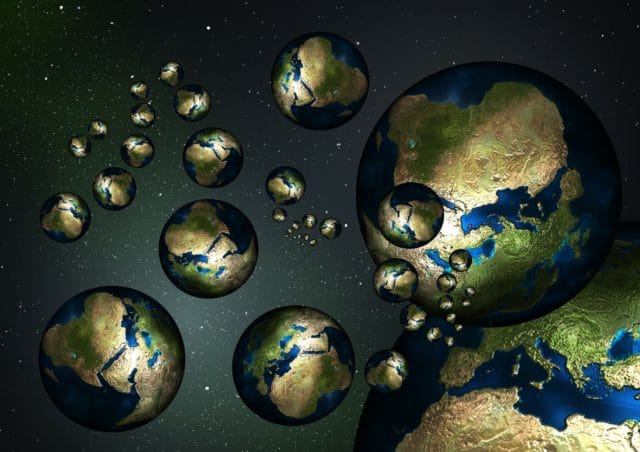
Quite a few scientific hypotheses have been proposed to explain the absolute weirdness of the universe we inhabit. Throughout the ages, humanity has struggled to explain the existence of something so vast and random, though to little success. What old world priests explained with magical deities and prophecies has now turned into complicated, modern scientific theories, even if neither of them really have a clue.
One fascinating-yet-scary theory tries to explain it in Darwinian terms, even if it’s just a thought experiment at this point. According to it, natural selection dictates the rules in multiverses just like life on Earth. Some multiverses do well and evolve to sustain a variety of thriving life, which may be the explanation to why our universe doesn’t seem to have any signs of intelligent life other than us.
If this theory holds, our universe is just a weak offspring with not much happening in it, soon to be ended by a bigger, stronger universe by the way of natural selection. While there’s a good chance that we – at least in our lifetimes – would never be able to find out if that’s actually true, it definitely makes for a fascinating – and scary – scientific theory.
5. The Ghost Condensate
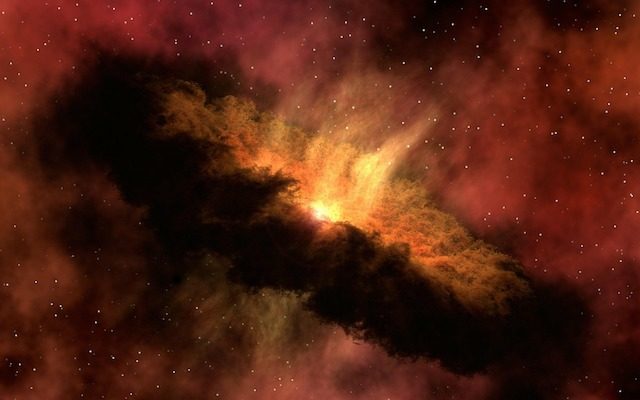
One of the biggest questions in physics is whether there’s one theory to explain everything in the universe, right from the smallest particles to the most massive clusters of galaxies. While many contenders exist – like the String Theory – none of those stand up to the peer-reviewed scrutiny scientists are so famous for.
One recent theory, though, has been gaining considerable ground in the scientific circles as ‘The One’. If you look at the universe, a huge chunk of it is made up of dark matter and dark energy – mysterious forces that don’t behave like any of our scientific models. There’s also the inexplicable expansion of the universe, something science has never been able to explain, either.
According to the theory, there’s a plausible explanation for all of those mysteries: the ‘ghost condensate’. Theoretically, all of the mysterious forces we’ve observed in the universe – including dark matter and dark energy – is just one force exerted by a ghost particle. Unlike gravity, the ghost condensate exerts a repelling force, though again, only if it exists, as all of it is still in the realm of scientific speculation right now.
4. Time May Not Actually Exist
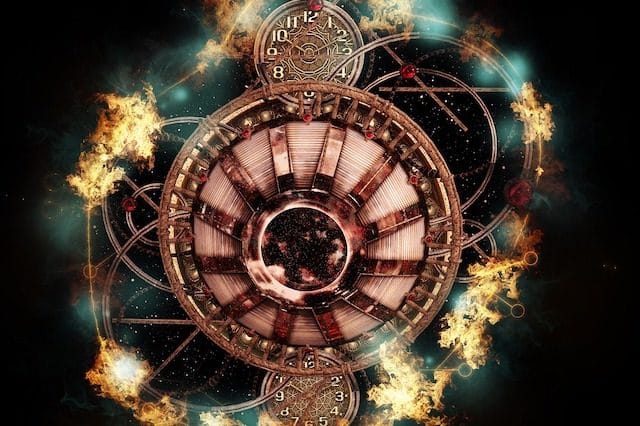
For most of us, the passage and direction of time is as real as the physical world we can see and touch around us. We know that there’s a past, present and future, and the arrow of time always moves from the past toward the future. This is how we assume time works for most people and other animals, which sounds intuitive. Why wouldn’t time be the same for everyone in the universe, whether it’s tiny forms of life like us or massive cosmic objects?
Simple answer: there is nothing called ‘absolute time’. One of Einstein’s most valuable insights was that time is nothing but ripples in space-time caused by the gravitational pull of massive objects. It’s different for everyone depending on where they are in respect to that disturbance. It wasn’t just theory, either, as many recent experiments have proven him correct. So much so that many modern gadgets – like GPS – rely on his calculations to function accurately. Because of him, we now know that time doesn’t have any meaning – or possibly even existence – without an observer.
3. The Participatory Anthropic Principle
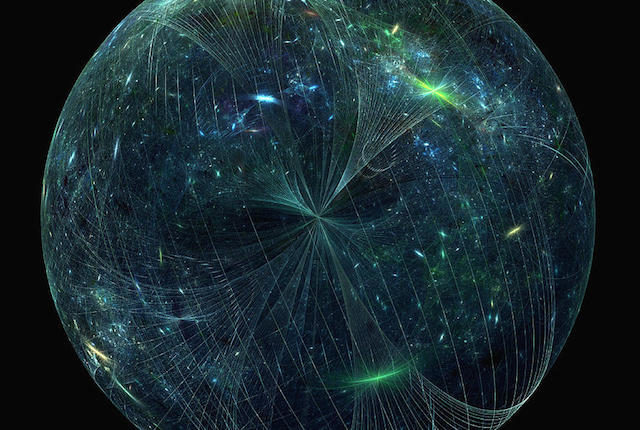
Of all the big questions of life, universe, and everything else, the biggest one is why all of it exists at all? While we may never know the precise circumstances that led to its beginning, we can still – theoretically – discuss the possible reasons for its existence.
Many theories exist, though one of the weirdest states that the universe exists only because of the observer: us. Known as the Participatory Anthropic Principle, it takes a commonly-known concept in quantum physics and applies it to the universe. In a quantum experiment, it’s impossible to take readings without – in some way – meddling with the experiment. That has huge implications, as it means that all of our observations are inaccurate. It’s impossible to know what quantum particles are doing when no one is looking. In other words, if this theory is correct, all the properties of physics, planets, galaxies and everything else exist only because we’re observing them.
2. The Single Electron Universe
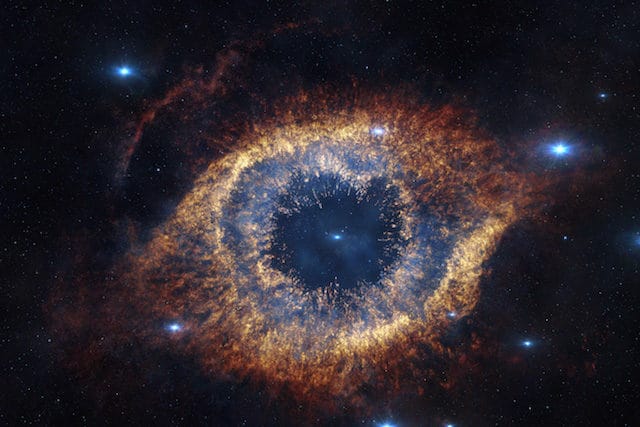
Everything across the universe is made up of suspiciously similar electrons, which has been a standing mystery for scientists for some time now. Every electron that has ever been observed in the lab has the same charge, mass and shape, which doesn’t make sense.
According to one quantum physicist, though, there’s a perfectly good reason for it: every electron is actually the same electron, rapidly moving through dimensions like space and time to make up everything in our reality. The antimatter counterpart of an electron – a positron – is that same electron too, only going backward in time instead of forward.
Of course, a lot of it remains speculative, as we have no equipment that can prove the existence of this single, all encompassing God of an electron. If true, however, it stands to explain many other mysteries of the universe.
1. The Unreasonable Applicability Of Mathematics
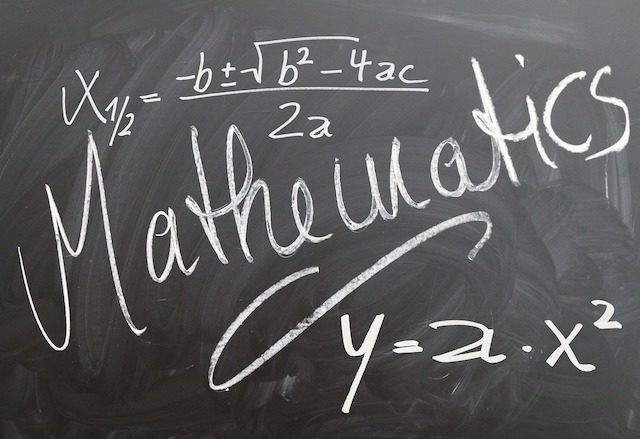
Even if most people tend to hate mathematics, everyone can agree on one thing: it makes sense. You can come to a mathematical conclusion using wildly different methods unrelated to each other, and the answer would be the same every single time. It applies in nature too. Many ancient calculations – like the size of Earth – have been later confirmed with modern equipment and likely with completely different, more advanced methods. Mathematicians in different fields have been accidentally confirming each others’ results for ages. It doesn’t just make sense; it makes too much sense. Why does the entire universe – with wildly different factors that should influence a mathematical outcome – follow the same mathematical rules?
This is the universal and unreasonable applicability of mathematics, and scientists and thinkers alike have been trying to explain it for a while now. It’s not just restricted to mathematics, either. The universe, in general, seems to be made up of factors that are just right for a place like Earth. If any universal value – like the mass of an electron, speed of light, gravity – was even a bit different, the universe would have looked a lot different than it does now, and we may have never existed.